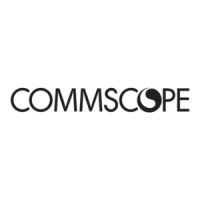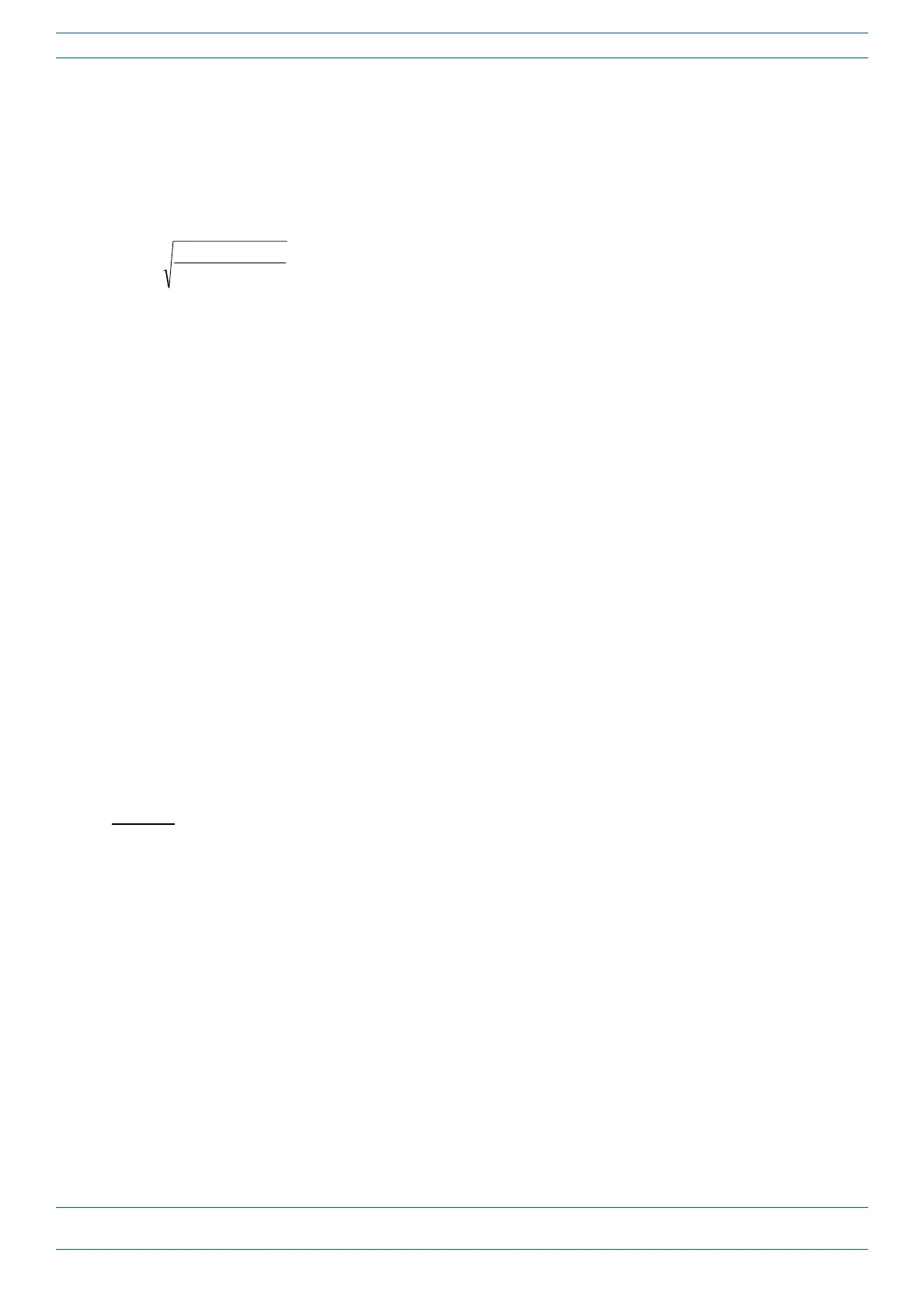CommScope Era
™
Fiber Low Power Carrier Access Point Installation Guide M0201ANC_uc
Page 14 © June 2019 CommScope, Inc.
Plan and Prepare for a Fiber CAP L Installation
Compliance
1 Notice: For installations, which have to comply with FCC RF exposure requirements, the antenna
selection and installation must be completed in a way to ensure compliance with those FCC requirements.
Depending on the RF frequency, rated output power, antenna gain, and the loss between the repeater and
antenna, the minimum distance D to be maintained between the antenna location and human beings is
calculated according to this formula:
]/[
][
][
2
4
cmmW
mW
cm
PD
P
D
where
• P (mW) is the radiated power at the
antenna, i.e. the max. rated repeater output power in addition to
the antenna gain minus the loss between the repeater and the antenna.
• PD (mW/cm²) is the allowed Power D
ensity limit acc. to 47 CFR 1.1310 (B) for general population /
uncontrolled exposures which is
– f (MHz) / 1500 for frequencies from 300MHz to 1500MHz
– 1 for frequencies from 1500MHz to 100,000MHz
R
F exposure compliance may need to be addressed at the time of lice
nsing, as required by the responsible
FCC Bureau(s), including antenna co-location requirements of 1.1307(b)(3).
2 Notice: Fo
r installations which have to comply with European EN50385 exposure compliance
requirements, the following Power Density limits/guidelines (mW/cm²) according to ICNIRP are valid:
• 0.2 for frequencies from 10 MHz to 400 MHz
• F (MHz) / 2000 for frequencies from 400 MHz to 2 GHz
• 1 for frequencies from
2 GHz to 300 GHz
3 Notice: Installation of th
is equipment is in full responsibility of the installer, who has also the
responsibility, that cables and couplers are calculated into the maximum gain of the antennas, so that this
value, which is filed in the FCC Grant and can be requested from the FCC data base, is not exceeded. The
industrial boosters are shipped only as a naked booster without any installation devices or antennas as it
needs for professional installation.
4 Notice: Fo
r installations which have to comply with FCC/ISED requirements:
English:
This device complies with FCC Part 15. Operation is
subject to the following two conditions: (1) this
device may not cause interference, and (2) this device must accept any interference, including
interference that may cause undesired operation of the device.
This device complies with Health Canada's Safety Code. The installer of
this device should ensure that RF
radiation is not emitted in excess of the Health Canada's requirement. Information can be obtained at
http://www.hc-sc.gc.ca/ewh-semt/pubs/r
adiation/radio_guide-lignes_direct-eng.php.
Changes or modifications not expressly approved by the party responsible f
or compliance could void the
user's authority to operate the equipment.
AntennaStmtforISED:
This
device has been designated to o
perate with the antennas having a maximum gain of 9 dBi. Antennas
having a gain greater than 9 dBi are prohibited for use with this device without consent by ISED
regulators. The required antenna impedance is 50 ohms.
The antenna(s) used for this transmitter must be installed to pro
vide a minimum separation distance (as
specified in Table 6) from all persons and must not be co-located or operating in conjunction with any

